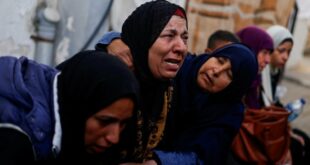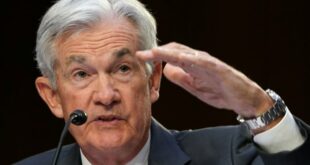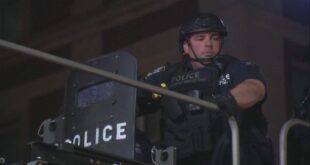War headed toward stalemate as support from Ukraine's allies appears vulnerable
Nearly two years into the war, Russia on Friday launched its "most massive aerial attack" on Ukraine.
Ukrainian officials said Russia launched 122 missiles and 36 drones against Ukrainian targets, killing at least 30 civilians and injuring more than 140.
Damage was reported in the capital Kyiv, the central city of Dnipro, the western city of Lviv, the southeastern port of Odesa and the eastern city of Kharkiv.
The 18-hour barrage brought the war back into focus for many, including CBC readers who want to know where the conflict stands.
Here's a look at some key areas.
Front line
Fighting along the front line is largely bogged down by winter weather after Ukraine's summer counteroffensive failed to make a significant breakthrough along the roughly 1,000-kilometre line of contact and alter the momentum of the war.
Gen. Valeriy Zaluzhnyi, commander in chief of the Ukrainian Armed Forces, penned a frank assessment of the battlefield conditions for theEconomistlast fall that suggested the war was sliding toward a stalemate.
In May, Russian forces took Bakhmut, a city in Ukraine's eastern Donbas region, after months of brutal urban combat and heavy causalities on both sides.
The toll on the Russian side was so severe that it prompted a mutiny by the Wagner private military company, which eventually led to a short-lived march on Moscow and later the death of Wagner's leader, Yevgeny Prigozhin.

Though the strategic value of Bakhmut is debated, it held much symbolic value for Ukraine as an example of the country's resistance to the invasion and served as Russia's biggest military gain since the early days of the war.
Much of the focus since has been in nearby Avdiivka, about 90 kilometres south of Bakhmut. As of Dec. 21, Russian forces advanced to within two kilometres of the city at an estimated cost of nearly 20,000 casualties.
Avdiivka is seen as a gateway to Donetsk city, an occupied city about 15 kilometres south whose residential areas Russian officials say have been regularly shelled by Ukrainian forces. Pushing Ukrainian forces out of Avdiivka would be seen by Russia as enlarging the amount of territory it controls, while also making Donetsk city safer.

Why Ukraine’s counteroffensive has stalled
9 days ago
Six months into Ukraine’s much-anticipated counteroffensive against Russia, experts say the campaign has largely stalled. CBC’s Briar Stewart breaks down what’s gone wrong and what might happen next.
There have been some Ukrainian gains the past year.
By the end of the summer and after ferocious battles, Ukrainian forces liberated roughly 65 square kilometres of territory in the central Zaporizhzhia region, though it was a tiny fraction of what Kyiv had initially wanted.
And slowly but surely, war-watchers from both sides confirmed that Kyiv has managed to establish a bridgehead on the left bank of the Dnipro River near the village of Krynky, in the central Kherson region.
The territorial gains at the Dnipro appear small — a few square kilometres, at best, and the Ukrainian forces have yet to break out beyond the vicinity of the river — but the strategic significance may nonetheless be important.
It opens up an avenue for Ukraine to possibly advance toward the southern Crimea peninsula — which Russia illegally annexed from Ukraine in 2014 — and cut off a land corridor stretching from occupied regions in the east, thereby disrupting supply lines.
In Russia, groups of anti-Kremlin fighters claimed responsibility for attacks in the western Belgorod region that borders Ukraine. Meanwhile, drones have struck buildings in Moscow.
Military goals
Russian President Vladimir Putin said the initial invasion of Feb. 24, 2022, which Moscow calls a "special military operation," was to demilitarize and "denazify" Ukraine, citing alleged neo-Nazi elements in Ukraine's government — claims derided by Kyiv and the West — and the country's ambitions to join NATO.
After failing to take Kyiv, Russia shifted to capturing the Donbas, a mostly-Russian speaking industrial region in the east.
"There will be peace when we will achieve our goals," Putin said in a rare news conference in mid-December, repeating a frequent Kremlin line.
Ukrainian President Volodymyr Zelenskyy has long shot down the idea that Ukraine should cede any territory to achieve a ceasefire, and has said that peace negotiations can only proceed after Russia has fully withdrawn from Ukraine, including Crimea.
Russia rejects the proposal, and Putin has previously said he is ready enter peace talks with Ukraine, but on Russia's terms.
U.S. officials have said they think he is waiting for the 2024 U.S. presidential election before making any serious moves toward peace.
Foreign aid
In advance of this summer's expected counteroffensive, European nations and the U.S. provided Ukraine with approximately 100 Leopard 2 main battle tanks, several hundred armoured personnel carriers and other fighting vehicles, and hundreds of thousands of rounds of artillery ammunition.
After the counteroffensive failed to pull off similar results to what Ukraine achieved in 2022, Western support appears to be fracturing — financially if not publicly.
In the U.S., more than $60 billion US worth of military aid is stalled in the Senate by Republicans who say that any more money for Ukraine must be passed alongside changes to domestic immigration policy — a contentious issue in Washington.

Ukrainian President Zelenskyy appeals to U.S. Congress for more aid
17 days ago
At an in-person visit with U.S. President Joe Biden in Washington, Ukrainian President Volodymyr Zelenskyy made an impassioned plea to Congress for more aid, but skeptical Republicans appear unmoved.
Another huge financial package worth more than $53 billion from the European Union may be boycotted by Hungary's Russia-friendly government.
Zelenskyy has flown around the world to meet the leaders of Ukraine's allies to stir up support — including to Canada, which ended in controversy when Parliament gave a standing ovation to a Ukrainian solider who fought for the Nazis.
While Canada, the U.S. and others say they will continue to back Ukraine, aid commitments have been modest compared to contributions from earlier in the war.
Last night, Russia launched massive missile and drone strikes against multiple Ukrainian cities, including Kyiv. <br><br>Canada strongly condemns these attacks against Ukraine and Putin’s illegal invasion. We continue to <a href="https://twitter.com/hashtag/StandWithUkraine?src=hash&ref_src=twsrc%5Etfw">#StandWithUkraine</a>.
—@melaniejoly
For example, the U.S. announced a $250 million US aid package on Wednesday, which President Joe Biden says is the last Washington can send without congressional approval.
Putin said in his December news conference that Kyiv was sacrificing its troops in order to show some success to its Western sponsors as it seeks more aid, which he predicts will dry up soon.
Death tolls and injury counts rise
The U.K. Ministry of Defence said earlier in the month that between late February 2022 and November 2023, official Russian forces suffered as many 240,000 wounded and 50,000 killed. Wagner mercenaries likely suffered 40,000 wounded and 20,000 killed, the ministry said.
On the Ukrainian side, a Ukrainian civic group said it has confirmed 24,500 combat and non-combat deaths using open sources. But if many of the 15,000 troops listed as missing are also dead, the figure could be much higher, according to a report published in the Ukrainian journal Tyzhden.
The United Nations has said more than 10,000 civilians have been killed and more than six million have been displaced.
With files from CBC's Murray Brewster, Chris Brown, Briar Stewart, John Mazerolle and Justin Li; The Associated Press; and Reuters
*****
Credit belongs to : www.cbc.ca
 MaharlikaNews | Canada Leading Online Filipino Newspaper Portal The No. 1 most engaged information website for Filipino – Canadian in Canada. MaharlikaNews.com received almost a quarter a million visitors in 2020.
MaharlikaNews | Canada Leading Online Filipino Newspaper Portal The No. 1 most engaged information website for Filipino – Canadian in Canada. MaharlikaNews.com received almost a quarter a million visitors in 2020.







